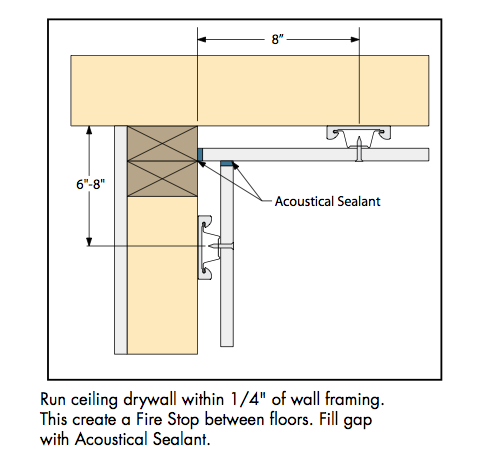Soundproofing is a crucial aspect of creating a peaceful and comfortable living environment in your home. The presence of noise from adjacent rooms can be a nuisance, especially if you work from home or have young children who need a quiet space to sleep. In this article, we will discuss some simple steps to reduce sound transfer between rooms and partitions in your home.
1. Sealing Gaps and Cracks
Sealing gaps and cracks around windows, doors, and electrical outlets is a crucial step in reducing sound transfer in your home. These gaps and cracks can allow sound to enter other rooms, creating a noisy and disruptive environment. To prevent this, you can use silicone caulk or weather stripping to seal the gaps. This simple and affordable solution can make a significant difference in reducing sound transfer in your home.

2. Adding Mass to the Walls
Adding mass to the walls is another effective way to reduce sound transfer. You can add mass by adding a layer of drywall or installing soundproof panels to the existing walls. The added mass helps to block sound transmission, creating a quieter and more peaceful living environment. This is a great solution for homes in noisy areas or for those who work from home and need a quiet space to concentrate.

3. Installing Soundproof Drywall
Installing soundproof drywall is a great option for those building a new home or renovating. This type of drywall has an added layer of mass and insulation that helps to block sound transmission. By installing soundproof drywall, you can create a peaceful and comfortable living environment, free from the noise and disruption of adjacent rooms.


4. Using Acoustic Caulk and Sealant:
Acoustic caulk and sealant are essential for reducing sound transfer in your home. These materials can be applied to the joints between the walls and the ceiling, as well as around windows and doors, to help prevent sound from leaking into other rooms. They are an affordable and easy solution that can make a significant difference in reducing sound transfer in your home.


5. Adding Soundproof Insulation:
Adding soundproof insulation to your walls and ceilings is another way to reduce sound transfer. Soundproof insulation materials like mineral wool, fiberglass, or foam can absorb and block sound, reducing the amount of noise that enters your space. This is a great solution for homes in noisy areas or for those who need a quiet space to sleep or work.

6. Installing Soundproof Windows
Replacing your windows with soundproof windows is an effective solution for reducing sound transfer. Soundproof windows are designed to block out noise, providing a peaceful and quiet environment. They are an excellent investment for homes in noisy areas and can significantly reduce the amount of sound that enters your space.


7. Creating a Decoupled Wall
Decoupling the wall from the floor and ceiling is another way to reduce sound transfer. This involves creating a gap between the wall and the adjacent surfaces, which helps to prevent sound from transmitting through the wall. This is a more advanced solution that requires some construction expertise, but it can make a significant difference in reducing sound transfer in your home.

8. Using Acoustic Panels and Soundproof Curtains
Installing acoustic panels and soundproof curtains in your home can help to absorb and deflect sound, reducing the amount of noise that enters your space. These are an affordable and easy solution for reducing sound transfer, and they can be added to any room in your home. They are especially useful for those who work from home, or for those who need a quiet space to sleep or relax.


